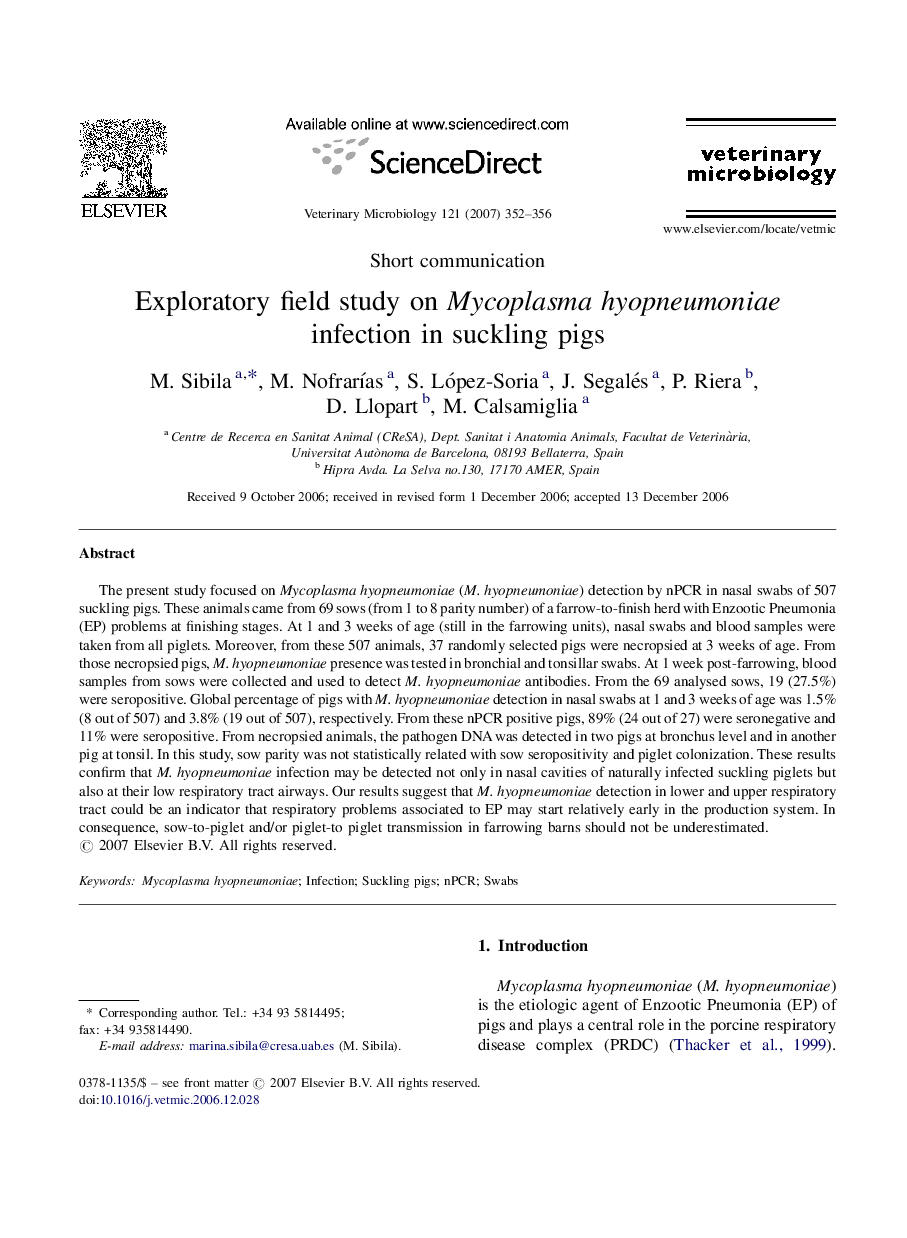| Article ID | Journal | Published Year | Pages | File Type |
|---|---|---|---|---|
| 2469258 | Veterinary Microbiology | 2007 | 5 Pages |
The present study focused on Mycoplasma hyopneumoniae (M. hyopneumoniae) detection by nPCR in nasal swabs of 507 suckling pigs. These animals came from 69 sows (from 1 to 8 parity number) of a farrow-to-finish herd with Enzootic Pneumonia (EP) problems at finishing stages. At 1 and 3 weeks of age (still in the farrowing units), nasal swabs and blood samples were taken from all piglets. Moreover, from these 507 animals, 37 randomly selected pigs were necropsied at 3 weeks of age. From those necropsied pigs, M. hyopneumoniae presence was tested in bronchial and tonsillar swabs. At 1 week post-farrowing, blood samples from sows were collected and used to detect M. hyopneumoniae antibodies. From the 69 analysed sows, 19 (27.5%) were seropositive. Global percentage of pigs with M. hyopneumoniae detection in nasal swabs at 1 and 3 weeks of age was 1.5% (8 out of 507) and 3.8% (19 out of 507), respectively. From these nPCR positive pigs, 89% (24 out of 27) were seronegative and 11% were seropositive. From necropsied animals, the pathogen DNA was detected in two pigs at bronchus level and in another pig at tonsil. In this study, sow parity was not statistically related with sow seropositivity and piglet colonization. These results confirm that M. hyopneumoniae infection may be detected not only in nasal cavities of naturally infected suckling piglets but also at their low respiratory tract airways. Our results suggest that M. hyopneumoniae detection in lower and upper respiratory tract could be an indicator that respiratory problems associated to EP may start relatively early in the production system. In consequence, sow-to-piglet and/or piglet-to piglet transmission in farrowing barns should not be underestimated.
